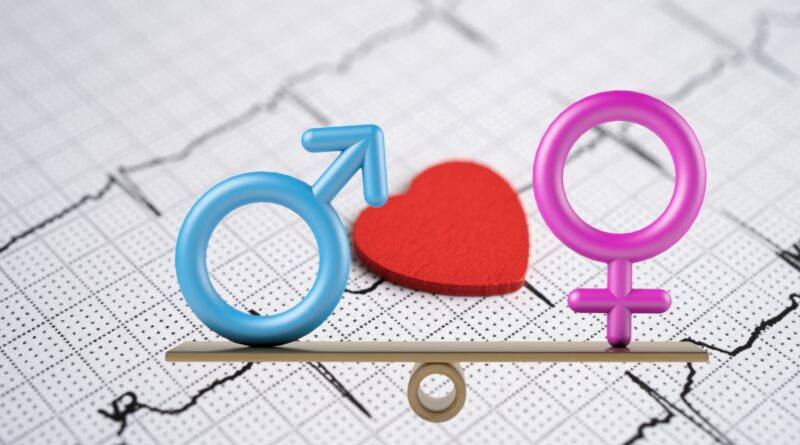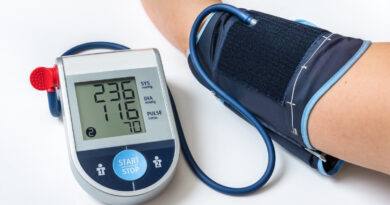Compare Heart Attacks In Men And Women: Results Here
Heart Attacks in Women: 7 Overlooked Symptoms That Differ From Men
When we hear the term “heart attack,” the image that often comes to mind is of a man clutching his chest in pain, collapsing suddenly. What this image doesn’t capture is the reality that heart disease is also the number one cause of death among women globally—a fact often overshadowed by decades of misperception.
From the bustling cities of the Indian diaspora in the US and UK to the high-stress work environments of urban India, women face an increased risk of heart disease. Yet, far too often, their symptoms go unnoticed, ignored, or misdiagnosed. Not because the signs aren’t there—but because they don’t always fit the classic male-pattern symptoms that dominate awareness campaigns and clinical trials.
This article aims to break through the fog, presenting factual, substantiated insight into how heart attack symptoms in women differ and what early warning signs every woman should look out for.
A Global Epidemic with a Gender Gap
Let’s begin with the data:
- According to the World Health Organization (WHO), cardiovascular diseases claim the lives of over 8.5 million women annually, accounting for 35% of all female deaths worldwide.
- In the United States, nearly 60 million women are living with some form of heart disease, and cardiovascular disease is responsible for 1 in every 3 female deaths annually.
- Alarmingly, a 2022 report by the British Heart Foundation revealed that women in the UK are 50% more likely to receive a wrong initial diagnosis following a heart attack than men, often delaying treatment by crucial hours or even days.
- In India, heart attacks among women have increased by over 15% in the past decade, with more women presenting atypical symptoms compared to their male counterparts, as highlighted by the Indian Heart Association.
The issue isn’t just physiological—it’s systemic. Women are less likely to be included in cardiovascular clinical trials, more likely to delay seeking care, and more frequently told their symptoms are due to stress, indigestion, or emotional distress.
Why Symptoms Differ Between Women and Men
The difference in symptoms can be attributed to several factors:
- Hormonal variations, particularly the protective role of oestrogen before menopause, can mask or alter traditional symptoms.
- Women often experience microvascular disease, affecting the small arteries of the heart, rather than major artery blockages that cause crushing chest pain in men.
- Social and behavioural aspects, such as underreporting symptoms or attributing them to fatigue or daily stress, contribute to late diagnoses.
Understanding these differences is key to early intervention and saving lives.
Seven Key Symptoms of Heart Attack in Women That Are Often Overlooked
While chest pain remains a cardinal symptom of heart attack in both genders, women often present with less obvious, more diffuse symptoms. Below are seven critical signs that every woman—and the people around her—should recognise:
1. Neck, Jaw, or Upper Back Pain
Instead of classic left-side chest pain, many women report discomfort in less obvious regions such as:
- The neck
- The jawline
- The upper back or shoulder blades
This type of pain is often misinterpreted as dental issues, posture-related strain, or muscular tension. However, when persistent, especially when combined with other signs, it may be a warning of cardiac distress.
Fact: A study published in the Journal of the American Medical Association found that 42% of women reported no chest pain at all during a heart attack, instead presenting with neck or back discomfort.
2. Shortness of Breath Without Chest Pain
Another subtle but serious indicator is unexplained breathlessness, which can occur:
- At rest
- During mild exertion
- While lying flat
Many women brush this off as anxiety or low stamina, but it can be a sign that the heart is struggling to pump effectively, leading to a lack of oxygen in the blood.
Note: Breathlessness can occur without any chest pressure and may precede more intense symptoms by days.
3. Nausea or Vomiting
Women are more likely than men to experience gastric symptoms during a heart attack. These may include:
- Nausea or queasiness
- Vomiting
- Bloating
- A sense of indigestion
Often mistaken for acid reflux, food poisoning, or a stomach bug, these signs delay treatment. However, when coupled with fatigue, pain, or cold sweats, they should raise immediate concern.
4. Extreme, Unusual Fatigue
Not the usual end-of-day tiredness, but a profound sense of exhaustion that can occur even after minimal physical activity.
Many women report:
- Inability to complete routine tasks (e.g., climbing stairs or walking a short distance)
- Feeling “heavy” or “drained” for no reason
- Needing to rest more frequently than usual
This early warning sign can appear weeks or days before an actual heart attack.
5. Light-headedness or Sudden Dizziness
Feeling faint, dizzy, or weak is another overlooked symptom, often attributed to dehydration, skipping meals, or lack of sleep.
However, these sensations—particularly when accompanied by breathlessness or visual disturbances—can indicate irregular heart rhythms or blood pressure drops, precursors to cardiac events.
6. Indigestion or Heartburn Sensation
Many women report a burning sensation in the chest or upper abdomen, frequently mistaken for gastric reflux or acidity.
If over-the-counter antacids do not relieve this sensation, and it occurs with other symptoms like nausea or back pain, it could be the heart trying to signal distress.
7. Cold Sweats Without Exertion
Sweating without physical effort—particularly a cold, clammy feeling—is a red flag. Unlike menopausal hot flushes, which are often brief and warm, cold sweats during a cardiac event tend to feel:
- Damp and sudden
- Paired with nausea or dizziness
- Unrelated to the external temperature
This symptom, particularly in women over 40, should never be ignored, especially if it appears at rest or during sleep.
Who’s at Risk? Not Just the Elderly
Heart attacks in women are not confined to the elderly. Risk factors that increase the likelihood of cardiovascular events in younger women include:
- Smoking
- Diabetes
- Polycystic ovary syndrome (PCOS)
- Sedentary lifestyle
- High blood pressure
- Obesity
- History of preeclampsia or gestational diabetes
Data from the Indian Council of Medical Research (ICMR) shows that women under 50 now account for over 20% of all female heart attack cases in India, up from 10% a decade ago—a worrying trend replicated globally.
Why Early Detection Is Vital
When symptoms are vague, misdiagnosis is common. Delays in treatment can lead to:
- Increased tissue damage in the heart
- Higher mortality rates
- Longer recovery periods
- Greater likelihood of complications, such as heart failure or arrhythmia
The good news is that outcomes improve significantly when intervention occurs within the first 60–90 minutes of symptom onset. This “golden hour” can drastically reduce mortality and disability.
What You Should Do If You Notice These Signs
- Do not self-diagnose or delay: Seek medical help immediately, even if symptoms are not severe.
- Know your baseline: If fatigue or indigestion is new, persistent, or different, treat it with caution.
- Demand evaluation: Request heart-related tests such as an ECG, cardiac enzyme blood tests, or a stress test if you suspect cardiac involvement.
- Do not drive yourself: Always call emergency services or have someone else take you to a medical facility.
How to Lower Your Heart Disease Risk
Preventive care is critical. Here are some science-backed steps:
- Routine Health Check-ups: Annual screenings for cholesterol, blood pressure, and diabetes.
- Nutrition: A diet rich in fruits, vegetables, lean protein, and whole grains.
- Movement: At least 150 minutes of moderate physical activity per week.
- Stress Reduction: Meditation, yoga, or walking can reduce inflammation and blood pressure.
- Avoid Smoking and Limit Alcohol: Smoking triples the risk of heart attack in women; alcohol, while sometimes protective in moderation, can backfire when consumed excessively.
- Weight Management: Even a 5–10% reduction in body weight can lower cardiovascular risk markers.
Final Thoughts: Listen to Your Heart—Literally
In the world of medicine, a woman’s pain has often been under-recognised and under-treated. When it comes to heart health, this invisibility can cost lives.
If there’s one message this article must carry, it’s this: heart attacks in women are real, common, and often silent in nature. But silent doesn’t mean harmless. Awareness, timely recognition, and quick action can make all the difference between life and tragedy.
Let your heart’s whispers be heard before they turn into shouts. Trust your instincts. Prioritise your health. And above all, never ignore what feels “off.”
Medical Disclaimer
The information provided in this article is intended for general awareness and educational purposes only. It is not a substitute for professional medical advice, diagnosis, or treatment. Always seek the advice of a qualified healthcare provider regarding any medical condition. The WFY Magazine does not assume responsibility for decisions made based on this article.




